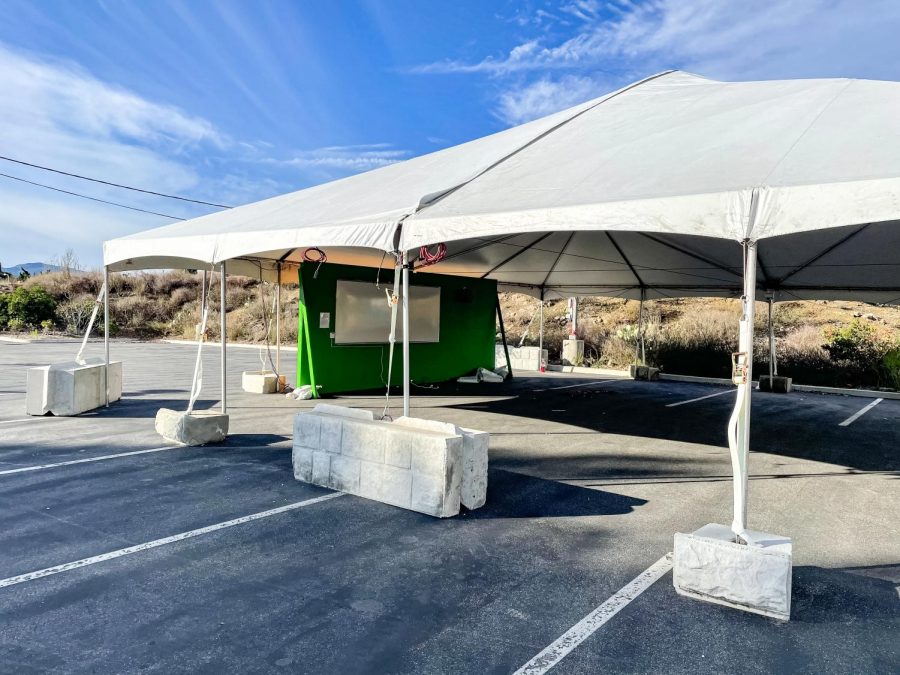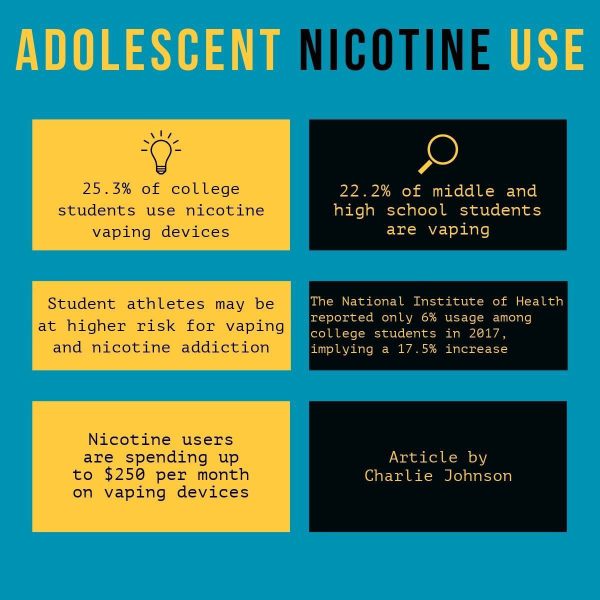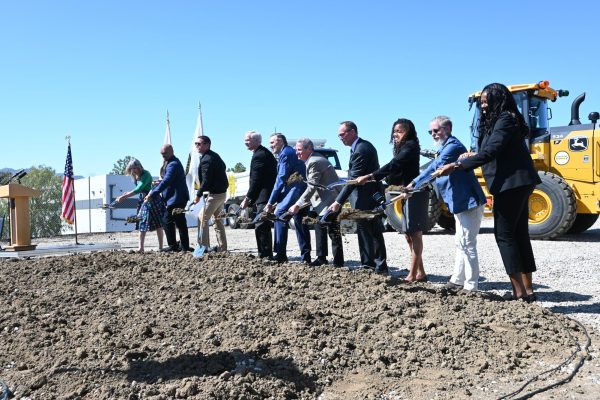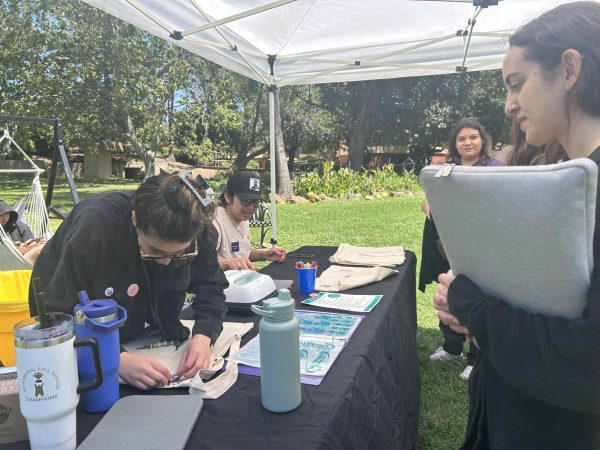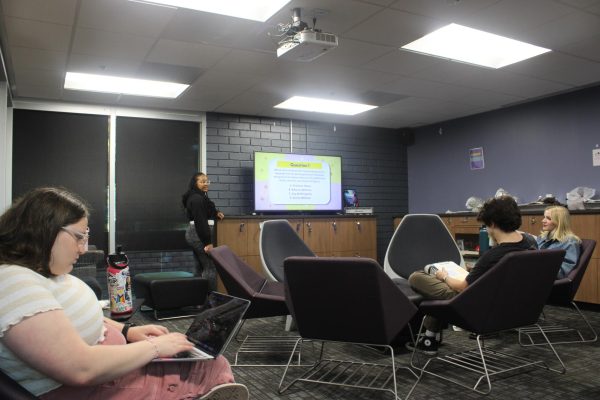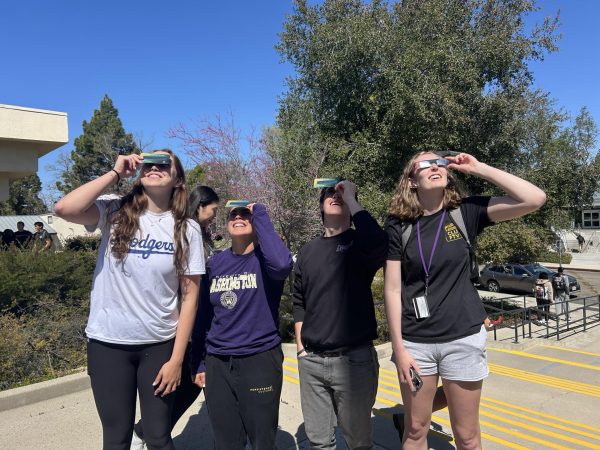Some faculty ‘stressed’ about return to in-person learning
Photo by Lindsey Potter, News & Managing Editor
Professors had the opportunity to opt-out of in-person learning while Ventura County remains in the purple, or most restrictive tier under Gov. Gavin Newsom’s reopening guidelines. When the state moves into the red tier, however, professors that do not have health exceptions will be required to teach in person. Pictured: an empty outdoor tent is constructed for in-person outdoor classes.
February 9, 2021
On Feb. 16, some California Lutheran University students will return to in-person learning in outdoor classes and some indoor labs and studios.
Dean of the College of Arts and Sciences Jessica Lavariega Monforti said the university has a list of actions to help create a safer return to in-person learning.
“Every single one of our classroom spaces has been rearranged so that we can have all of the physical distancing requirements met so the number of people who can be in any given room at a time has been lowered to meet the social distancing guidelines,” Lavariega Monforti said in a phone interview.
The university has also added outdoor classrooms, HEPA air filters, and toilet lids in high usage bathrooms in aim to create a safer learning environment, Lavariega Monforti said.
More in-person classes will be available once Ventura County enters the less-restrictive red tier, which requires a positivity rate of 5-8%, according to the California Department of Public Health. As of Feb. 5, Ventura County has a seven day PCR testing positivity rate of 10.9%.
Faculty members had the opportunity to decide if their classes would return to campus while the county remains in the purple tier.
“Faculty were given the option to choose if they wanted an outdoor classroom while we were under the purple tier,” Lavariega Monforti said. “If they were in a specialty class like a studio or a lab they were also given the option to come back in the purple tier; very few people have chosen to do that.”
The only classes that will not return in the red tier are those led by professors with health exceptions. The number of professors who were granted health exceptions was not disclosed.
Faculty also have stress and anxiety and get nervous and are maybe a little fearful and a little scared of what we’re gonna walk into later this semester. We’re also people, with immune systems and lungs and internal organs that we like to keep in as best possible condition and so we’re also kind of struggling with this.
— Dr. Aaron Heresco, Professor of Communication
Professor of Communication and member of Faculty Senate leadership Aaron Heresco said faculty members want to return to in-person learning under ideal circumstances, yet these are not ideal circumstances. He said he feels anxiety when reading news stories about the new COVID-19 mutations and their higher transmission rates.
“I don’t think anyone wants to be in this position, and I think faculty are feeling really stressed,” Heresco said in a Zoom interview. “I think faculty are feeling responsible, largely, for making sure students have the best possible academic experience, but we also don’t want them to get sick in the process.”
Heresco said that with students learning in person, there is no way to know where they have been outside of the classroom. He said he is looking to strike a balance between keeping himself and his family safe and interacting with students.
Professor of Religion Colleen Windham-Hughes returned to campus to teach in the fall semester, and has already experienced in-person teaching in both a limited indoor classroom setting and an outdoor tent.
“When I saw students in person I can’t even describe to you how excited I felt,” Windham-Hughes said in a phone interview. “We had to kind of acknowledge some of our nervousness and anxiety to each other, but it still was good for the people who were in person to be in person, and I think it’s the complexity and honestly the humanity of trying to make room to have multiple things be okay that is hard work for us.”
The university is asking students returning to in-person learning in February to provide proof of a negative COVID-19 test prior to their first class, but it’s ultimately up to individuals to take the proper precautions for a safe return.
“There are some staff and faculty who are saying it’d make sense to do this [mandatory COVID-19 testing] once a month or twice a month if we’re gonna be on regular campus, but right now it really is up to individuals,” Windham-Hughes said. “I would say we’re doing what we can to feel like individuals in this situation but to be connected to each other.”
There will be free testing on campus available on Feb. 12. Health Services is currently working with Ventura County to increase the frequency of on-campus testing due to more people coming to campus.
“We requested once a month, mobile unit on our campus for free testing but we don’t know if that’s going to happen,” Lavariega Monforti said. “We’re working very hard to make that happen.”
Nothing is set in stone; however, university administrators are constantly adjusting plans due to the pandemic’s unpredictable nature.
“Faculty also have stress and anxiety and get nervous and are maybe a little fearful and a little scared of what we’re gonna walk into later this semester,” Heresco said. “We’re also people, with immune systems and lungs and internal organs that we like to keep in as best possible condition and so we’re also kind of struggling with this.”
Windham-Hughes said the Cal Lutheran community should recognize that remembering the humanity in the pandemic is most important.
“It’s been obvious several times that professors are humans too,” Windham-Hughes said. “I’ve said to my students over and over again we gotta be able to be human together and we have to not try to decide ahead of time what’s gonna work for us and how we’re gonna feel about all of this.”
Communication is essential in order to minimize the spread of COVID-19 once in-person classes return; anyone who tests positive should report their case to [email protected].
“If anybody–faculty, staff, students–anybody at all feels that they have been exposed, even if they don’t have symptoms or do have symptoms, they should stop attending in person and immediately communicate with one another,” Lavariega Monforti said.

